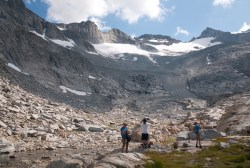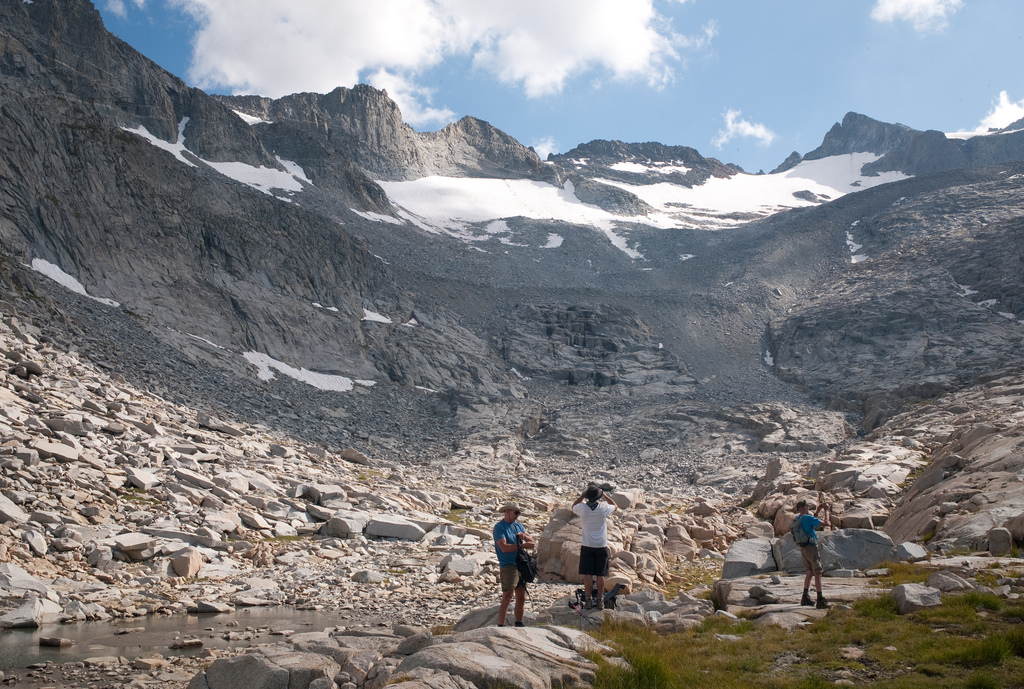
roger.williamsPark visitors gaze at what remains of the Lyell Glacier.
Hasta la vista, glacier.
The world’s glaciers are withering quickly — researchers say they are contributing to nearly one-third of sea-level rise, despite holding just 1 percent of the planet’s surface ice. And while the glaciers in California’s Yosemite National Park aren’t the largest, they are suffering the same alarming fate as their icy ilk in other parts of the world.
Yosemite’s granite cliffs and valleys were carved during the Ice Age as glaciers expanded. Now these vestigial masses of ice are mostly retreating — and fast. The park employs a full-time glaciologist, Greg Stock, who recently returned from a trek to Lyell Glacier, which is the park’s largest. He told the L.A. Times that it had shrunk visibly since he made the same back-country hike last year:
Lyell has dropped 62% of its mass and lost 120 vertical feet of ice over the last 100 years. “We give it 20 years or so of existence — then it’ll vanish, leaving behind rocky debris,” Stock said. …
Yosemite’s other glacier, Maclure, is also shrinking, but it remains alive and continues to creep at a rate of about an inch a day.
Lyell, however, hasn’t budged. It is the second largest glacier in the Sierra Nevada and the headwater of the Tuolumne River watershed, but it no longer fits the definition of a glacier because it has ceased moving.
“Lyell Glacier is stagnant — a clear sign it’s dying,” Stock said. “Our research indicates it stopped moving about a decade ago.”
Stock warned that when the glaciers disappear, steady water supplies that feed the park’s meadows and other ecosystems will disappear with them. “We don’t know what the impacts of that will be on plants and animals that evolved with these ice flows,” he told the newspaper.



